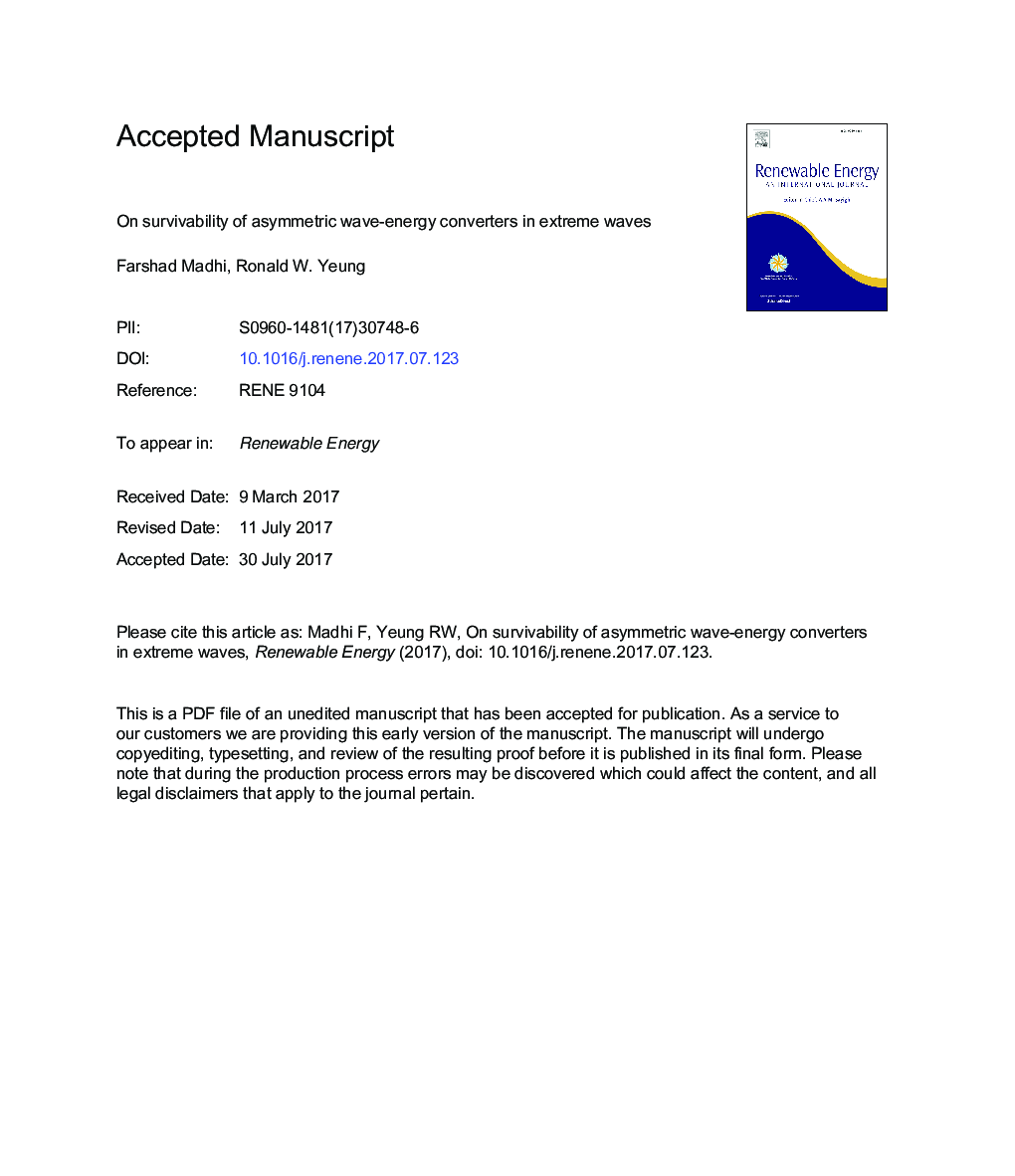| Article ID | Journal | Published Year | Pages | File Type |
|---|---|---|---|---|
| 6765056 | Renewable Energy | 2018 | 27 Pages |
Abstract
To provide guidance for improving the survivability of asymmetrical wave-energy converters (AWECs), the forces experienced by them in breaking-waves condition were analyzed and reported. “The Berkeley Wedge” (TBW), a highly efficient wave-energy converter and floating breakwater, was used as a canonical study. The forces were obtained by computation using the Weakly Compressible Smoothed Particle Hydrodynamics (WCSPH) method and by model-scale experiments. Breaking waves were first generated upstream for both physical and computational modeling by developing appropriate time histories of a wavemaker. Plunging breakers and wave forces from the computational model were verified by experiments for different drafts. To increase the survivability, while retaining the same operational draft of TBW, pressure-relief channel (PRC), a novel scheme that allowed water to flow through TBW was modeled and its effectiveness in extreme-waves was demonstrated computationally. A design was proposed to operate the PRCs so as to increase the survivability of such AWECs.
Related Topics
Physical Sciences and Engineering
Energy
Renewable Energy, Sustainability and the Environment
Authors
Farshad Madhi, Ronald W. Yeung,
